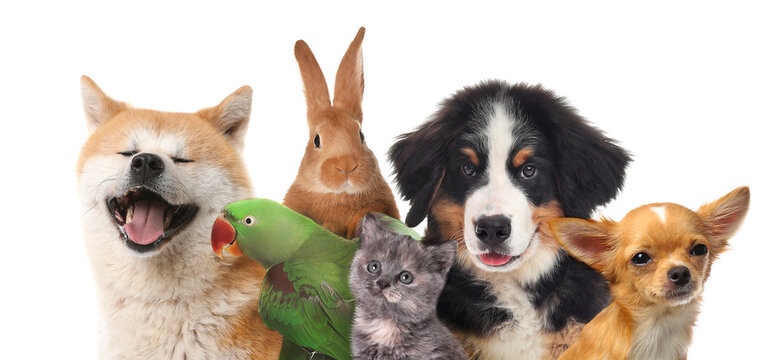Pet carriers are a crucial accessory for our furry friends regarding their safety and comfort during travel or trips to the vet. These carriers provide a secure and enclosed space for pets, ensuring they stay protected and calm in unfamiliar environments. Whether taking your pet on a road trip, flying with them, or simply needing a carrier for short trips, it's important to understand the significance of choosing the right carrier size to accommodate your pet's needs.
Understanding Your Pet's Size and Needs
When choosing a pet carrier, it is crucial to consider your pet's size, breed, and specific needs. Different pets have different space requirements based on their size and breed characteristics. For example, a small dog may only need a compact carrier with enough room to turn around and lie down comfortably, while a larger breed might require a carrier with more space to stretch out.
Similarly, cats may prefer carriers with multiple openings or a removable top for easier access. Additionally, consider any specific needs your pet may have, such as medical conditions or anxiety, and choose a carrier that can accommodate those needs. By considering these factors, you can ensure that your pet feels secure and comfortable in their carrier during travel or visits to the vet.
Measuring Your Pet
To measure your pet for a carrier, follow these step-by-step instructions:
- Length: Place your pet in a standing position and measure from the tip of their nose to the base of their tail. This will give you the length measurement.
- Height: Have your pet stand upright and measure from the floor to the highest point of their shoulders or head, depending on their posture. This will give you the height measurement.
- Width: Measure the widest point of your pet's body, usually around their chest or shoulders. This will give you the width measurement.
Choosing the Right Size Carrier
When selecting a carrier based on your pet's measurements, it's important to provide enough space for them to stand, turn around, and lie down comfortably. Here are some general guidelines to keep in mind:
- Length: Choose a carrier that is at least 1.5 times the length of your pet from nose to tail. This ensures they have enough room to stretch out and move around.
- Height: The carrier should be tall enough for your pet to stand without their head touching the top. Aim for a carrier that is about 1.5 times the height of your pet.
- Width: The carrier should be wide enough for your pet to turn around easily. Make sure there is ample space for them to move without feeling cramped.
Additional Considerations
In addition to your pet's measurements, additional factors should be considered when selecting a carrier. The type of travel, whether by air, car, or train, may have specific regulations or requirements for pet carriers. For air travel, it's important to check with the airline about their specific guidelines for pet carriers. They may have size restrictions, ventilation requirements, and other safety considerations. Ensure the carrier you choose meets the airline's requirements for a smooth travel experience.
When traveling by car, consider a carrier that can be securely fastened, either with a seatbelt or through other means of restraint. This will ensure your pet's safety during the journey. Look for carriers with built-in safety features or the option to secure them. If you plan to travel by train, you should check with the train service provider for any specific carrier requirements. Some trains may have size restrictions or guidelines for pet carriers that must be followed.
Tips for Ensuring Comfort and Safety
You can follow several tips to make the carrier more comfortable for your pet. Adding bedding can provide a soft and cozy surface for them to rest on during the journey. You can use a blanket, towel, or pet-specific bedding that fits well inside the carrier.
Another way to make the carrier more inviting is by adding familiar scents. You can place an item with your pet's scent, such as a blanket or a piece of clothing, inside the carrier. This can help create a sense of familiarity and comfort for your pet.
It's also a good idea to gradually introduce your pet to the carrier. Start by leaving the carrier open in a familiar and comfortable space at home. Encourage your pet to explore the carrier on their terms by placing treats or toys inside. This will help them associate positive experiences with their carrier. Additionally, you can use pheromone sprays or calming products specifically designed for pets. These can help create a soothing environment and reduce anxiety for your pet during travel.
Proper ventilation and security are crucial when selecting a carrier for your pet. To ensure proper ventilation, look for carriers with mesh panels or windows allowing good airflow. This will help keep your pet comfortable and prevent them from overheating during travel. In terms of security, it's important to choose a carrier with secure closures, such as zippers or latches, to prevent accidental escapes. Double-check that the closures are sturdy and in good working condition before using the carrier.
Additionally, consider carriers with reinforced seams and durable materials to ensure your pet stays safely contained throughout the journey. If you're concerned about additional security, you can also look for carriers with built-in leash attachments. This allows you to secure your pet's harness or collar to the carrier, providing an extra layer of protection.
Conclusion
It mentions that albino ball pythons have a unique genetic mutation that affects their skin pigmentation, resulting in their beautiful white and yellow coloration. The article also highlights that albino ball pythons require special care, such as proper lighting and maintaining appropriate humidity levels in their enclosure. Additionally, it mentions the importance of handling albino ball pythons gently and avoiding direct sunlight, as their lack of pigmentation makes them more sensitive to UV rays.


No comments yet